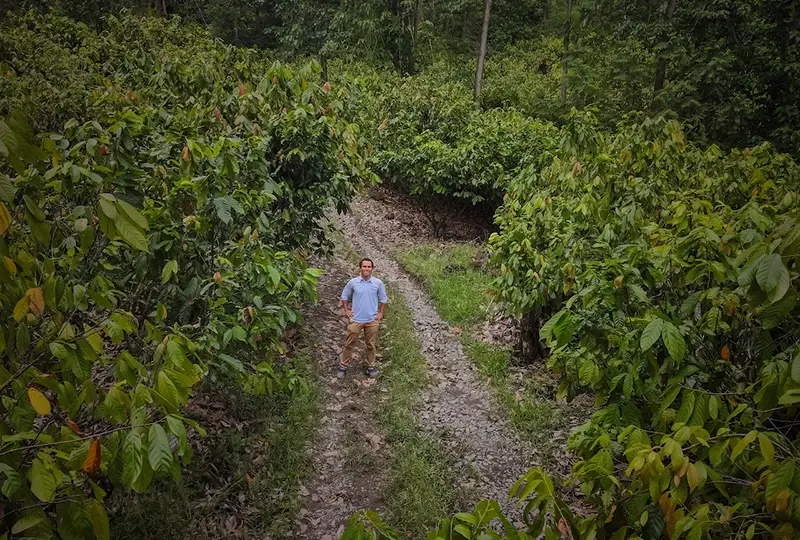Contact us for high-quality chocolate ingredients!
As global demand for safe, ethically sourced chocolate continues to grow, consumer expectations for transparency and accountability are at an all-time high.
Ensuring compliance with international standards, managing heavy metals and allergens, and adhering to certifications are critical to building consumer trust and safeguarding brand reputation.
This guide outlines actionable steps for chocolate manufacturers and brands to uphold the highest safety and quality standards. Whether navigating regulatory landscapes or seeking to stand out in a competitive market, this resource provides the insights you need.
These are key factors to revise:
- Heavy Metal Control in Chocolate
- Allergen Management Practices
- Certifications and Standards
- What we have learned from our experience
- Actionable Strategies for Brands and Consumer Trust
Heavy Metal Control in Chocolate Manufacturing
Heavy metals such as cadmium and lead are present in the environment and can accumulate in crops like cocoa due to soil composition. When consumed in large quantities, these elements pose health risks, especially in sensitive populations such as children. Compliance with international food safety regulations, such as those set by the European Union, ensures that chocolate manufacturers prioritize consumer health and trust.

Best Practices for Managing Heavy Metals
- Source Responsibly: Collaborate with turnkey chocolate manufacturers who implement sustainable farming techniques to minimise soil contamination. Regular soil testing in sourcing regions helps identify risks early.
- Implement Rigorous Monitoring: Use advanced technologies such as atomic absorption spectroscopy to measure heavy metal levels at various production stages, including fermentation, drying, milling, and storage.
- Address Non-Compliance Swiftly: When levels exceed permissible limits, conduct a root cause analysis, refine processes, and adjust sourcing practices.
Real-World Application
From our experience, integrating monitoring checkpoints throughout production not only ensures compliance but builds long-term supplier trust. Brands that adopt such proactive measures differentiate themselves as safety leaders in the market.
At Luker Chocolate, stringent protocols are in place to monitor and manage heavy metal levels across the entire production process. Our laboratory employs advanced techniques like atomic absorption spectroscopy to measure cadmium and lead content. This sampling plan begins with sourcing and extends through production stages, including milling, storage, and the final product.
>Contact us for tailored solutions<
Addressing Non-Compliance
A comprehensive corrective action plan must be activated if heavy metal levels exceed acceptable limits. This includes holding affected products, reassessing supplier practices, and refining processing methods to mitigate future risks.
Free-from Chocolate: Allergen Management Practices
In today’s food landscape, allergen control is a fundamental part of ensuring consumer trust and safety. Food allergies are on the rise, and consumers demand transparency in their food choices. It’s no surprise, regulatory bodies such as the FDA and EFSA enforce stringent allergen control measures.
Mismanagement of allergens can lead to severe health consequences, regulatory fines, recalls, and damage to brand reputation.
For chocolate manufacturers, managing allergens such as milk, soy, and nuts requires meticulous attention to detail at every production stage to meet both regulatory standards and consumer expectations.

From production planning to final labelling, successful allergen control systems are built on meticulous organisation and continuous improvement. Key strategies observed across the industry include:
Core Practices in Allergen Control
- Dedicated Equipment and Cleaning Protocols: Use separate production lines for allergen-free products or implement rigorous cleaning between batches to prevent cross-contact. Designing production schedules that separate allergen-free batches from those containing allergens reduces the risk of cross-contamination.
- Ingredient Labelling: Accurately label allergenic ingredients, even in trace amounts, to foster consumer trust. Transparent labelling, such as “Dairy Free” or “Soy Free,” builds consumer confidence.
- Training and Education: Equip employees with knowledge on allergen risks, proper handling, and sanitation protocols. Regular training sessions help staff understand and adopt best practices.
- Routine Testing and Validation: Validate cleaning processes and test for allergens throughout production to verify safety. Advanced techniques, such as atomic absorption spectroscopy, offer precise quantification of cadmium and lead levels
Addressing Contamination Risks
When an allergen cross-contact occurs, swift action is essential. Industry best practices involve:
- Halting affected production lines immediately.
- Investigating the root cause of contamination.
- Reviewing and strengthening cleaning protocols.
- Issuing product recalls, if necessary, with clear consumer communication.
By learning from such incidents, businesses can adapt and strengthen their systems to reduce future risks.
What are the Standards and Certifications for Consumer Safety in Chocolate Production?
Ensuring consumer safety in chocolate production requires an uncompromising approach to quality control, allergen management, and heavy metal monitoring.
From implementing robust allergen control protocols to adhering to international limits on heavy metal content, each step reflects a dedication to transparency and trust. Certifications such as FSSC 22000 and ISO 22000 validate a manufacturer’s commitment to food safety and quality. Beyond compliance, they offer strategic advantages, including improved consumer trust and market access.

Key Benefits of Certifications
- Market Differentiation: Highlight certifications to demonstrate a commitment to quality and safety.
- Global Compliance: Certifications align with international regulations, streamlining market entry.
- Operational Improvements: Adherence to certified practices enhances overall efficiency and product integrity.
How to Integrate Certifications Into Your Brand
- Collaborate with manufacturers who hold relevant certifications.
- Use certification logos and messaging in marketing materials to reinforce credibility.
- Align certifications with your brand’s commitment to safety and sustainability.
>Enhance your operations and brand reputation with high-quality chocolate ingredients<
⭐🔬Luker's In-house Expertise
Our in-house laboratory, accredited by ONAC (National Accreditation Organisation of Colombia), is a benchmark of precision and reliability. As of November 2024, we became the first laboratory accredited in Colombia to test lactose protein content (lactose allergen), adding to our capabilities in cadmium content determination and Salmonella detection! This demonstrates our alignment with international food safety expectations and our commitment to helping brands deliver products that meet the highest quality standards.
What Sets Us Apart:
- Cutting-Edge Testing: Our laboratory employs over 90 methods across physical, microbiological, and sensory analyses, conducting more than 100,000 tests annually.
- Certifications That Matter: From FSSC 22000 to ISO 14001, we ensure every product aligns with global safety and sustainability benchmarks.
- Adaptability and Precision: Continuous improvement cycles allow us to anticipate and respond to changing regulatory landscapes and client needs.
At Luker Chocolate, we empower brands to meet and exceed market expectations through rigorous protocols and strategic partnerships.
Actionable Strategies for Brands
- Supply Chain Audits: Partner with suppliers who prioritise safety and sustainability, conducting regular audits to assess compliance.
- Work With Certified Manufacturers: Collaborate with producers who hold global certifications to guarantee product integrity.
- Communicate Safety Standards: Build trust by sharing your safety protocols with consumers through transparent labelling and marketing.
- Leverage Advanced Testing: Use precise data from testing to refine your formulations and align with consumer preferences.
- Position Safety as a Differentiator: Highlight your commitment to quality and compliance as a key brand value.
Ensuring consumer safety in chocolate production is not just a regulatory requirement—it’s an opportunity to lead in quality and trust. By adopting rigorous protocols, leveraging certifications, and proactively managing risks, brands can differentiate themselves in an increasingly discerning market.
At Luker Chocolate, safety and quality are more than priorities. By combining expertise, advanced technologies, and a commitment to continuous improvement, we empower brands to navigate challenges and build consumer trust.
>Enhance your operations and brand reputation with high-quality chocolate ingredients<





















